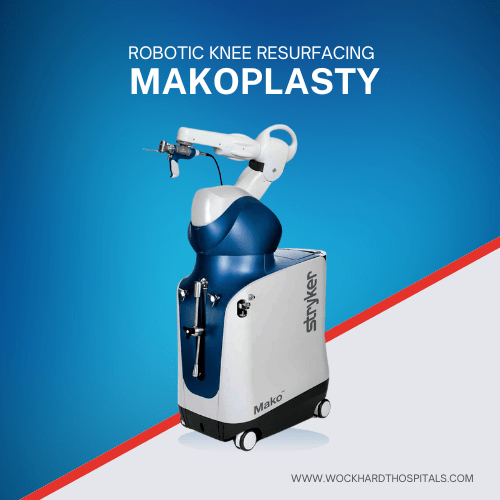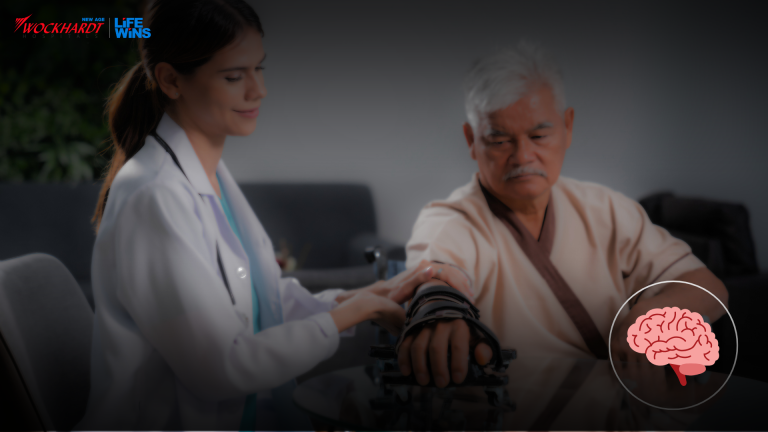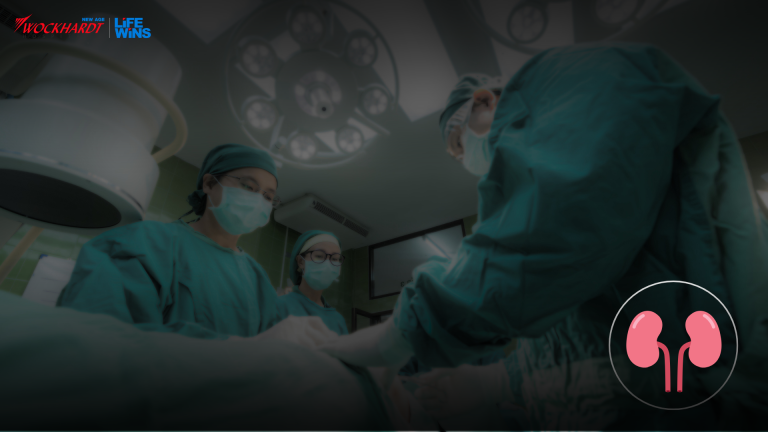Shane Warne Death
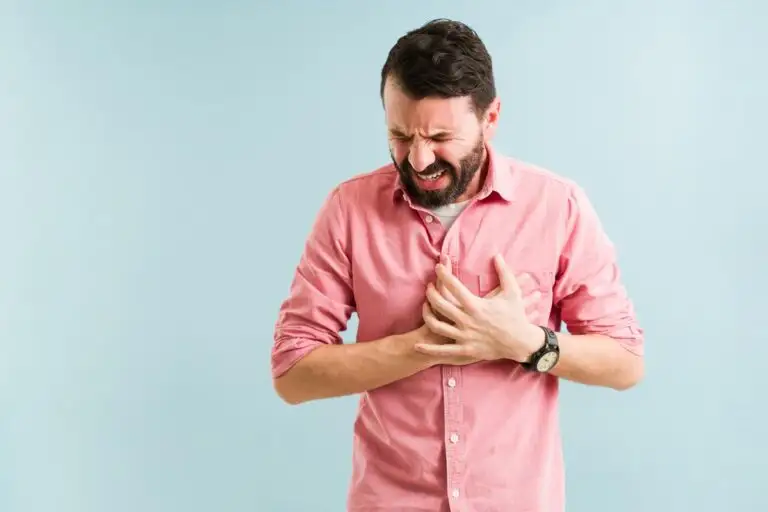
Australia cricket legend Shane Warne died of a suspected heart attack in Thailand on Friday, aged 52. According to a statement released by the late cricketer’s manager, he was found unresponsive in his villa and “despite the best efforts of medical staff, he could not be revived.” With his untimely death, the topic of sudden cardiac death in super-fit young athletes is being widely discussed again. We spoke to a few doctors to know the possible causes of heart attacks in athletes. Here is what they say: Even Exercise is Good Only in Moderation “We all believe that running marathons and getting a six-pack abs is good for our health. However, as with everything else, even exercise is good only in moderation,” says Dr Kaushal Chhatrapati, Interventional Cardiologist, Wockhardt Hospitals, Mumbai Central. He explains, “Strenuous exercise can cause ‘oxygen debt’ in the cardiac tissue, which can trigger cardiac arrhythmia and death. Also, increase in heart rate and BP with overzealous exercise can cause microscopic tears in our heart arteries, which are nidus for clot formation. This clot can then occlude one of our major heart arteries and cause a life-threatening heart attack.” Unaccustomed Exercise Might Lead to Heart Damage Dr Ankur Phatarpekar, acknowledges that heart attack and sudden cardiac death are affecting people across the age group. “In a heart attack, the blood flow to the heart is stopped which acutely damages the heart. There is a rise in cardiovascular diseases across the globe due to sedentary lifestyle and other risk factors such as hypertension, diabetes etc. Exercise is good for your health, but unaccustomed exercise might lead to heart damage and rhythm disorders. Consumption of alcohol, smoking, habit forming drugs could lead to a heart attack.” Two Main Reasons for Cardiac Arrest in Athletes Dr. G Ramesh, points out two main risk factors for sudden cardiac death or cardiac arrest in athletes. He says: 1) Young adults with an arrhythmic substrate or predisposition to having abnormal heart rhythms because of genetic predisposition as has happened recently with an international footballer . The diagnostic tests in these cases include an ECG echo and stress test, but many cases might be missed. The treatment will be an insertion of implantable cardiac defibrillator and avoiding predisposing factors such as extreme exertion 2) The other cases are that of recent examples of our cricketers who have had a heart attack which has been treated in time as with Sourav Ganguly or Kapil Dev or proved fatal with Yashpal Sharma. The reason in these cases is a sudden plaque rupture in the coronary arteries leading to sudden blockade of the artery and sometimes sudden cardiac death. This plaque rupture generally happens in arteries with cholesterol deposition. The reasons could be multifactorial, including family history of heart disease diabetes, hypertension, obesity, smoking, or excess alcohol consumption, extreme stress either physical or mental and dietary habits. Everyone Including Athletes Should Go for Regular Cardiac Checks Accoprding to Dr. Ramesh, the best way to prevent this condition would be to have a balanced lifestyle along with regular health checkup, including an ECG echo and stress test. In addition, control of risk factors such as diabetes and hypertension are a must. Many athletes sometimes do extreme exertion which is not advised. Everyone including athletes should go for regular cardiac checks to detect the issues which are many times asymyomatic. “Young people have a lot of stress – stress of performance, stress associated with urbanization, lifestyle – which often leads to smoking (both active and passive smoking), drinking, unhealthy eating habits and patterns. This in turn causes stress on the heart, leading to either heart attack, cardiac arrest or arrhythmia,” he adds. Dr. G. Ramesh summarizes, “A moderation in exercise is a key factor; ideally 45mins to 1 hour exercise is recommended 5 to 6 days in a week to maintain a good cardiac health.” Source: https://www.thehealthsite.com/diseases-conditions/shane-warne-death-strenuous-exercise-can-trigger-cardiac-arrhythmia-and-death-warn-doctors-866999/
North Mumbai Gets its First Dedicated Sports Medicine Facility
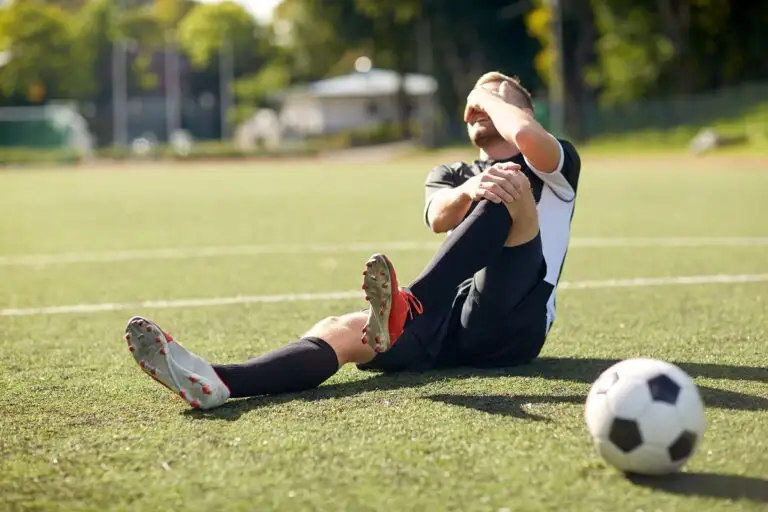
Wockhardt Hospitals, Mira Road launched North Mumbai’s first dedicated sports medicine diagnosis, rehabilitation, and surgery facility as a dedicated centre. The Hospital is a tertiary care hospital that caters to a population across Western India. The faculty is spread across 215,000 sq feet. Speaking at the launch, Dr. Girish Bhalerao, Head – Centre of Excellence for Sports Medicine and Consultant- Joint Replacement & Sports Medicine Specialist, said, “We are proud to come up with a Centre for Sports Medicine which is a comprehensive facility with tailor-made programs for the diagnosis, treatment, rehabilitation, and recovery involving all the essential facilities. This centre is a one-stop solution for not only athletes but non-athletes too.” This sports medicine will provide all the services under one roof. “This centre will help the athletes to take care of their overall well-being. It will allow improving performance levels not only in athletes but even non-athletes of various age groups,” said Soniya Rajage, Freestyle wrestling Champion. Below are the facilities available at the centre: Dr Pankaj Dhamija Center Head, Wockhardt Hospitals in Mira Road said, “Our centre of Excellence for Sports Medicine aims to provide comprehensive medical care for sports-related injuries when it comes to professional athletes as well as sports enthusiasts.” To give the best possible treatment in sports Related Injuries, the Center of Sports Medicine has some renowned experts from India and Abroad while involving an entire team of trained Rehabilitation Specialists. The experienced faculty consists of : “The department will be able to deal with all the problems related to sports injuries and injuries to joints. This includes evaluation of the patient, imaging, diagnosis of injuries, cryotherapy and advanced Electrotherapeutic modalities, sports rehabilitation, fitness evaluation, sports nutrition, and sports psychology,” said Bhalerao. “Aim of the Physiotherapists and Rehabilitation specialists will be to help athletes of all age groups and all levels of ability to enhance their sports performance and provide evidence-based advice and support on safe participation in sports and exercise,” concluded Dr Imraan Khan, Consultant & Head Physiotherapy and Sports Rehabilitation department. Source: https://www.mumbailive.com/en/sports/north-mumbai-gets-its-first-dedicated-sports-medicine-facility-71817
Risk Factors is Key to Surviving Cerebral Palsy

The passing away of Microsoft CEO Satya Nadella’s son has brought the focus back on cerebral palsy, a condition the 26-year-oldsuffered from. The passing away of Microsoft CEO Satya Nadella’s son has brought the focus back on cerebral palsy, a condition the 26-year-oldsuffered from. The prevalence of cerebral palsy, which is characterized by motor impairment and incoordination, in Western countries is estimated to be 2.4 per 1,000 children. According to a study published in the Journal of Pediatric Neurosciences, the prevalence is expected to be higher in India owing to poor infrastructure of health care services. “One of the main risk factors for cerebral palsy is birth asphyxia . If we can ensure institutional or supervised delivery, this risk and, therefore, the chances of cerebral palsy will reduce,”Dr Shefali Gulati, said. In 2019, the doctors from the department of paediatrics at Lady Hardinge Medical College and Kalawati Saran Children’s hospital, conducted a study to find out the risk factors associated with the disease. It involved a detailed history taking and clinical examination of 160 children in the age group of 2-15 years who suffered from cerebral palsy. It was found that the most common etiology or risk factor was birth asphyxia (41.9%). Birth asphyxia happens when a baby’s brain and other organs do not get enough oxygen during or right after birth. “Most common risk factor of cerebral palsy is birth asphyxia; thus, by improving healthcare facilities, its incidence can be reduced,” the researchers pointed out. Other risk factors associated with cerebral palsy are neonatal sepsis or meningitis, prematurity, twins, pathological jaundice, and kernicterus (a type of brain damage that can result from high levels of bilirubin in a baby’s blood), the study found. Dr Prashant Makhija, consultant neurologist at Mumbai’s Wockhardt Hospitals, said cerebral palsy as the name indicates manifests as limb weakness (palsy) due to brain damage (cerebral). Symptoms, he said, vary depending on the severity of brain damage. “Spastic cerebral palsy is the major type which results in weakness of the limbs along with stiffness of the limb muscles (spasticity), there may also be speech and swallowing difficulties. Some may face issues with limb coordination (ataxia) and some may also have abnormal limb movements. In addition to the weakness, stiffness, coordination and speech/swallowing issues faced by the child, additional symptoms include (not seen at all)—intellectual disability, vision and hearing problems,” Dr Makhija said. He added that treatment is largely supportive in the form of speech/swallow therapy, physiotherapy, occupational therapy. “Depending on the severity, some interventions can be done to control the stiffness (spasticity) of the limbs— Botulinum toxin injection and anti-spasticity medications,” Dr Makhija said. Early recognition of the problem and early initiation of therapy can significantly help in overcoming the disability associated with the disease, the neurologist said. Source: https://health.economictimes.indiatimes.com/news/industry/why-tackling-risk-factors-is-key-to-surviving-cerebral-palsy/89934656
Wockhardt Hospital Nagpur Gets Platinum Status from World Stroke Organization
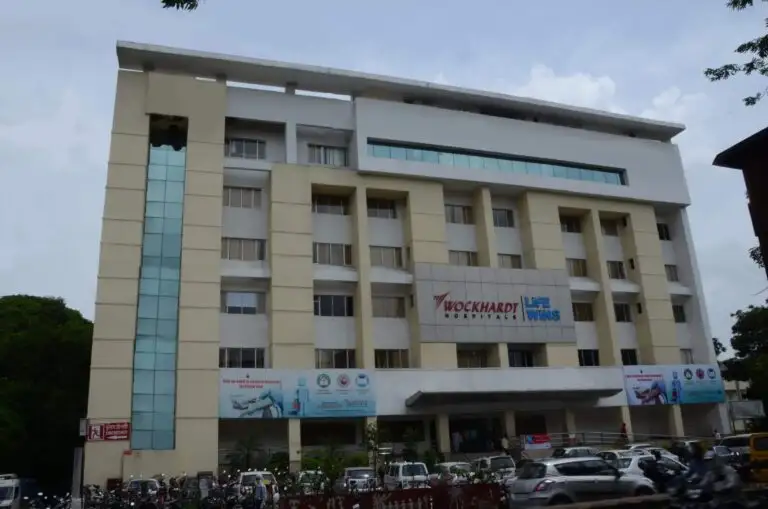
In an addition to yet another feather on its cap, Wockhardt Hospital, Nagpur has recently been rewarded with Platinum status by World Stroke Organization, Geneva, Switzerland for excellence in stroke care. This makes Wockhardt Hospital as the only hospital in the region to be given this esteemed status. It is for the second consecutive time that the organization has been provided with this title. Previously, in Q3, gold status was also provided to the hospital. The World Stroke Organization is the only global body solely focused on stroke. With around 3000 individual and 90 society members spanning every global region, they represent over 55,000 stroke specialists in clinical, research, and community settings. The award has been given on the parameters of time taken for CT/ MRI and door to balloon/ needle time- actual treatment time. “The Platinum award to our Hospital awarded by World Stroke Organization (WSO) is a result of consistent quality care of stroke patients presenting in the Emergency Room. Prompt, accurate, and timely management of patients in both the Pre Hospital and in hospital settings by our team of qualified professionals has helped us achieve this reputed award. It is the dedication of the team that has brought us to this position and made us the only hospital in the entire region to receive this stature”, said Abhinandan Dastenavar, Centre Head, Wockhardt Hospitals, Nagpur. The dedicated team of Stroke Management at Wockhardt Hospitals in Nagpur comprises of Dr. Amit Bhatti, Consultant- Neurology, trained and certified nursing staff, and specialist Resident Medical Doctors who believe and act on the fact that in stroke management- Minutes save a life. The hospital also has a separate workflow to handle such cases- from identifying the stroke to beginning the treatment. The emergency department staff receives regular training for these workflows. The treatment options available for stroke in Wockhardt Hospitals are Thrombolysis, Mechanical Thromboctomy, and sx intervention. The hospital also has a comprehensive stroke care unit and conducts regular mock drills for proper training. This award from the World Stroke Organization (WSO) acts as a platform to acknowledge excellent stroke care and honor the teams and organizations that go above and beyond in the care for their patients.
Ribs fractured, lungs punctured, multiple surgeries save youth
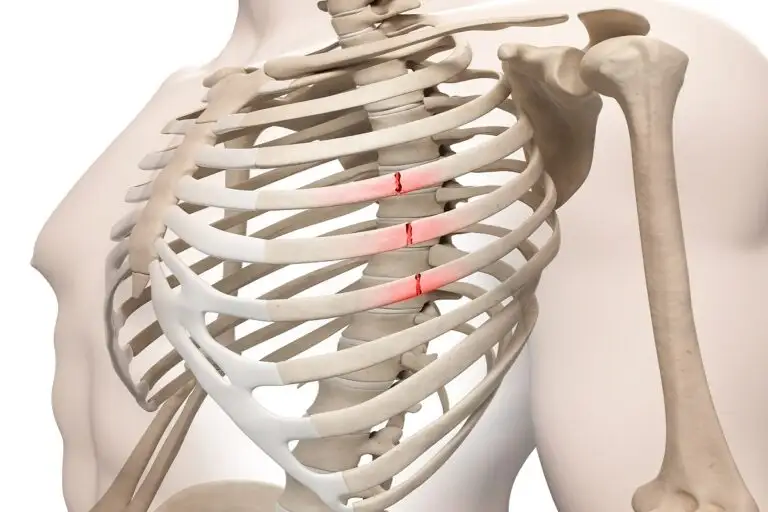
A rare and very complex surgery saved the life of a 27-year-old youth at Wockhardt Hospital recently. The man met with an accident near Balaghat and fell in a creek. He lay there for over three hours before some passers-by noticed him and took him home. As his condition deteriorated and he fell unconscious, family members brought him to Nagpur. Dr Vaibhav Agrawal, who treated the patient, told TOI that the X-ray and primary investigations revealed that the rib cage of this person had multiple fractures. “Six out of eight ribs were fractured. His lungs were also ruptured and chest was filled with blood and air,” said Dr Agrawal. Immediately, the blood accumulated in his chest was removed in an emergency procedure. “The most important thing to keep in mind while treating such patients is pain management. Our team did it efficiently,” Dr Agrawal said. The trauma team included Dr Nitin Kimmatkar, Dr Vaibhav Agrawal and Dr Rahul Zamad. As the patient had multiple complications, a multidisciplinary treatment was planned for him. Dr Nitin Kimmatkar said it took two days to stabilize the patient, after which they decided to operate upon his rib fractures. “His chest ribs were fixed with plates and screws, which is generally avoided in the surgical fraternity, as it is a very complex procedure and needs high skills. His lungs were ruptured and filled with air. We had to act very gently while repairing the lungs to save his life. We did two surgeries on this patient in a single sitting,” said Dr Kimmatkar, adding that the first surgery was done for scapula (shoulder blade) and one for fracture of ribs. Anesthesiologist Dr Rishikesh Awode played an important role in handling this case. The patient was discharged recently in stable condition and doctors claim he will start leading a normal life soon. “With advanced technology and multidisciplinary approach, we were able to save another valuable life and achieve a milestone in healthcare,” said Abhinandan Dastenavar, centre head, Wockhardt Hospitals, Nagpur, adding that the city has already emerged as a medical hub of central India and many complicated trauma cases can be managed in Nagpur now. Dr Vaibhav AgrawalInternal MedicineWockhardt Hospital, Nagpur Source: https://timesofindia.indiatimes.com/nagpur/ribs-fractured-lungs-punctured-multiple-surgeries-save-youth/articleshow/89838276.cms
Doctors baffled as man watching TV feels strange neck pain, left paralysed for life

Read on to know how a 36-year-old man suffered an unknown spinal injury that left him paralyzed for life – all within a matter of just 20 minutes. In July 2019, the life of a 36-year-old man, Darren Roberts changed when he suddenly felt a sharp pain in his shoulders and neck, followed by needle-like sensations in his arms. Before he could comprehend anything, it was too late because, within a matter of just 20 minutes, his body neck down had stopped responding. The numbness had spread throughout his body and all he was left was a paralyzed body and despair. Irreversible damage to the spinal cord Although Darren eventually responded to the treatment, the damage sustained by his spinal cord was irreversible and he had no choice left but to come to terms with the fact that his life will never be the same again. According to Metro.co.uk, Darren said, “During all of this, my parents had called for an ambulance, and when they arrived they basically had to remove me from the bath as I was basically dead from the neck down.” “I had an inkling it was more serious than I thought, although I was still awake and breathing when the ambulance arrived. When I had the MRI I was completely immobile,” he added. As ‘spine care’ chilling this peculiar case of Darren Robers is, it is also extremely intriguing. Hear it from the expert Times Now Digital connected with Dr Pavan Pai, Neurologist at Wockhardt Hospitals in Mira Road to understand how the human body can turn into a dysfunctional mess within a matter of just 20 minutes. Commenting on the possible conditions that can lead to instances of paralysis, Dr Pavan said, “It (paralysis) happened all of a sudden so it looks like a case of demyelination because otherwise, he would have been conscious and alert. His limbs stooped responding and it was followed by a needle-like sensation. This indicates a loss of transfer of impulse from the brain to other parts of the body” Demyelination is a condition that occurs when there is a sudden loss of the protective covering of the nerve cells, called the myelin sheath. This can cause the transmission of nerve impulses from the spinal cord to the brain to stop (or slow down), resulting in neurological issues. “Second possible situation could be a case of transverse myelitis which can also lead to demyelination. This happens when two or three segments of the spinal cord are affected and there is loss of transmission and sensation,” he added. Sharing an experience he had with a patient, Dr Pavan said, “I had a similar experience with a patient affected by demyelination in the first week of October and. He had also become a quadruple and still hasn’t recovered despite the therapy.” Paralysis within 20 minutes – Risk factors and treatment Elaborating on the possibility of paralysis within a timeframe as short as 20 minutes, Dr Pai said, “Paralysis within 20 minutes is possible because whenever there is a swelling in the spinal cord, it can lead to paralysis and can cause severe damage to the spinal cord.” He further talked about the risk factors and said, “It can happen to anyone. Sometimes there are antibodies such as MNO antibody and MOG antibody, that are generated against our own cells which can lead to this kind of a condition. Multiple sclerosis (MS) is another condition that can lead to paralysis.” “There are usually no particular lifestyle factors that can contribute to this kind of condition. In complications such as anterior spinal artery syndrome, hypertension and diabetes could be a factor. However, the case of Darren looks like that of demyelination, a condition which usually does not have any risk factors,” Dr Pai added. Shedding light on the treatment, Dr Pavan said, “Usually this condition is permanent but in some cases, it can be treated with steroids or plasma exchange It is always better to initiate the treatment as soon as possible.” Dr Pavan Pai, Neurologist Wockhardt Hospitals, Mira Road Source: https://www.timesnownews.com/health/article/doctors-baffled-as-man-watching-tv-feels-strange-neck-pain-left-paralysed-for-life/861587?frmapp=yes
How many times can one get reinfected with Covid-19?

Doctors say it’s not that the antibodies do not work, but there is a possibility that they “may not be sufficient antibody response to the infection”, due to which the person may not develop adequate immunity and his body is prone to infection again. Of late, many cases of individuals being re-infected with Covid-19 have been reported, prompting health authorities to once again stress the need to continue taking precautionary measures. As such, fresh guidelines to curb the spread of Covid-19 and its variants including Omicron have also been issued. In light of the same, it’s essential to understand why reinfection after recovery — and in some cases double vaccination — is still happening, and what can be done. What is Covid-19 reinfection? According to US Centers for Disease Control and Prevention (CDC), reinfection is when a person gets infected once, recovers, and then gets infected again. According to experts, based on what is known from similar viruses, some reinfections are expected. Ongoing Covid-19 studies will help us understand: *How likely is reinfection?*How often does reinfection occurs?*How soon after the first infection can reinfection take place?*How severe are cases of reinfection?*Who might be at higher risk for reinfection?*What does reinfection means for a person’s immunity?*Whether a person is able to spread Covid-19 to other people when reinfected In an AIIMS Delhi study, two doses of indigenously developed Covid-19 vaccine Covaxin were found to be 86 percent effective in preventing Covid-19 reinfections in Indian healthcare workers (HCWs) during the second wave that was driven by the Delta variant. The study was published in the JAMA Network Open journal. Another National Center for Biotechnology Information (NCBI) study suggested that prior infection in patients with Covid-19 was highly protective against reinfection and symptomatic disease. This protection increased over time, suggesting that viral shedding or ongoing immune response may persist beyond 90 days and may not represent true reinfection. As vaccine supply is limited, patients with a known history of Covid-19 could delay early vaccination to allow for the most vulnerable to access the vaccine and slow transmission, the November 2021 study mentioned. Experts have noted waning immunity in patients who have recovered from Covid-19. Does that make people more vulnerable to reinfections? Dr. Sulaiman Ladhani, believes “cases testing repetitively positive are very rare”. “Even if such cases are seen, it could be in a setting where there is high exposure for people, like healthcare workers, or those with multiple co-morbidities or extremely low immunity. But this is very rare,” he said. Dr. MD Mubasheer Ali said, “Large-scale serological screening with validated tests will identify individuals who may have protective immunity to infection and a better measure of disease activity. It is highly unlikely that Covid-19 infection strikes the person twice in a short window.” Reinfection with Covid-19 or SARS-CoV2 is said to be a matter of scientific discussion. As of now, it is not clear whether a person who has been infected once develops permanent immunity against the disease, or can get reinfected. An understanding can help decide intervention strategies required to control the spread of the disease which can aid in assessing how long people will have to depend on masks and physical distancing, as well as vaccinations and precaution doses. According to Dr. Bipin Jibhkate, consultant critical care medicine, and ICU director Wockhardt Hospitals, Mira Road, a person can “test positive twice or thrice a month as the deadly virus is still present in the body”. “It takes around 30 days on average for the virus to disappear after one exhibits the symptoms of Covid. It can be present for a longer time when it comes to the older population or one having a severe illness. Testing positive again and again can be shocking and worrisome for the patient, but that doesn’t mean he/she is contagious and will transmit the infection to others around. They may not have an active infection at that time. Those who keep testing positive need to follow Covid-appropriate behavior: wear a mask, maintain social distancing, and sanitize hands. Be at home, do not allow any visitors at home,” said Dr. Jibhkate. So, do antibodies not work? It’s not that the antibodies do not work, but there is a possibility that they “may not be sufficient antibody response to the infection”, due to which the person may not develop adequate immunity and his body is prone to infection again, asserted Dr. Ladhani. According to Dr. Vishal Wadhwa, SARS Cov-2 is a highly mutable virus and has gone over 33 lakh mutations by now. “Usually, a mutation leads to viral death but rarely it encodes for a survival advantage and ensures enhanced transmission/severity of the infection and immune escape. Vaccines/infections create two types of immune responses. One is humoral (antibody) and the second is cell-mediated. Immune escape happens when the mutation occurs at the S gene which codes for the spike protein. Due to this, the existing humoral antibodies are not able to counter the fresh invasion and a person suffers from an infection; cell-mediated immunity comes into play later and is not able to prevent the occurrence,” explained Dr. Wadhwa. Agreed Dr. Arunesh Kumar, explained how “one can get Covid positive multiple times because what Covid test detects is one particular Covid infection episode”. “Like other viruses, SARS COV-2 too mutate. Mutations mean they modify their genetic core, which is essentially the nucleus of the virus. When it changes the core material, it starts behaving like a new virus and that’s why our immunity doesn’t recognize them as the same Covid virus, which we had been infected with previously,” noted Dr. Kumar. In light of cases of Omicron, a highly contagious virus, what are the possibilities? “Omicron has shown at least 47 mutations affecting all the regions of its genome including spike protein. This means there will be an immune escape phenomenon leading to reinfections and also there will be a failure to detect SARS COV-2 by a few PCR kits. In addition, there will be a chance that patients will fail to respond to monoclonal antibodies and existing anti-viral antibiotics (due to mutations in the non-structural protein-encoding region as well),” elaborated Dr. Wadhwa. Dr.
Prostate Cancer- Why is Screening So Important?

Prostate Cancer- one of the most common cancers in male is also the one which is diagnosed mostly when it is already quite late. As the cancer is not having early signs and symptoms, the diagnosis often gets delayed having an adverse affect on heaths of patients. Dr. Uday Chandankhede, Consultant- Uro-Onco Surgeon, Wockhardt Hospitals in Nagpur informs about the disease under hospital’s- Patient Education Initiative. The prostate is a gland in the male reproductive system. It is about the size of a walnut and surrounds part of the urethra (the tube that empties urine from the bladder). Prostate cancer is the second most common cause of cancer in males worldwide as well as the most common cause of cancer-related death. There is a steady rise in its incidence in India, which puts it as the 9th most prevalent cancer. The incidence of the disease increases after 40 years of age, and most people are diagnosed between 60 and 70 years of age. Unfortunately, prostate cancer usually has no early warning signs, so it can remain unnoticed for quite some time. For this reason, screening for prostate cancer is so important for all men. It is recommended to have a simple screening procedure after 50 years of age with measurement of blood prostate-specific antigen levels (PSA), and if indicated, a rectal examination of the prostate, with your doctor. The screening age is 45 years for those with a family history of prostate cancer and other types of cancer treatment in India. Early in the course of the disease, a patient may not have any symptoms or may have mild symptoms similar to benign prostatic obstruction, such as increased frequency of urination during the day, night, and slower urine flow. When these symptoms go unnoticed, patients may develop metastatic disease, which means cancer has spread to other organs. In advanced stages, patients will have blood in the urine, urinary retention, perineal pain, backaches, and other bony pain. In this scenario, a complete cancer cure is not possible. In our country where the proper awareness regarding health issues is lacking, most of the patients are diagnosed in the late stages where the treatment options are limited with chemotherapy and hormonal therapy. The complete cure of early-stage cancer can sometimes be achieved with surgery or radiation therapy or both is required in some scenarios. For prevention of prostate cancer, eat a healthy diet full of vegetables and fruits, exercise regularly, and avoid excessive fat, red meat, alcohol, and smoking. Last but not the least, screening for prostate cancer in case of lower urinary tract symptoms and age more than 50 years, family history of prostate cancer, and age more than 45 years. Dr. Uday ChandankhedeConsultant- Uro-Onco SurgeonWockhardt Hospitals, Nagpur Source: https://thelivenagpur.com/2022/02/16/prostate-cancer-why-is-screening-so-important/
A 15-year-Old Boy with MIS-C Successfully Treated at Mira Road
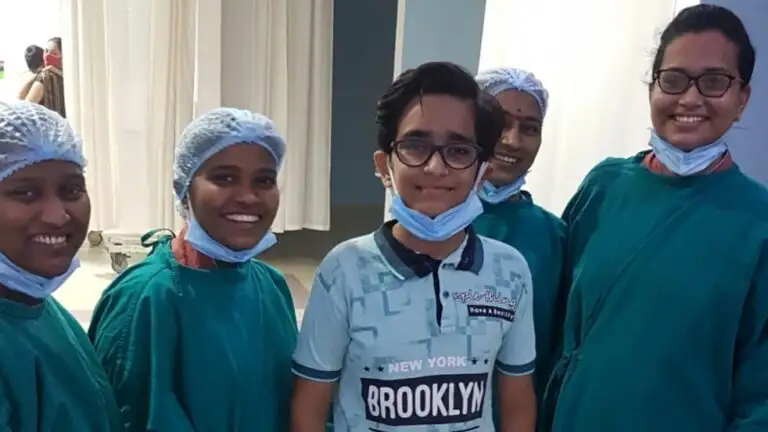
A 15-year-old boy was successfully treated for multisystem inflammatory syndrome in children (MIS-C), a fatal post-Covid complication that involves multiple organs. Now, the patient has been discharged from the hospital, reunited with his family, and has resumed his daily routine with ease. Harsh Chauhan a 15-year-old resident of Virar, Palghar district, Maharashtra, complained of high-grade fever, severe abdominal pain and was taken to a local hospital wherein ultrasonography was performed on (30/12/21). As per the investigation, the patient had appendicitis and underwent appendectomy, a surgery to remove the appendix when it is infected, and a large amount of pus was drained from the abdomen. On the second postoperative day, his saturation dropped to merely 40 % whereas the normal saturation is more than 94 % on room air. The patient was breathless and was referred to Wockhardt Hospitals, Mira Road for further treatment. Dr. Ankit Gupta, Lead Paediatric Critical care specialist, Wockhardt Hospitals in Mira Road, said, “On arrival in an emergency at 2:30 AM in the night. the patient was critical and his saturation level was 30%. He was IMMEDIATELY put on high ventilator support, his CT scan showed around 70 % of lung involvement, and had acute respiratory distress syndrome (ARDS). Since there was multi-system involvement like abdomen, lungs and his blood pressure was low, we suspected multisystem inflammatory syndrome in children (MIS-C) temporarily associated with Covid. MIS-C is a syndrome wherein one’s organs and tissues tend to get severely inflamed. It involves one’s heart, lungs, kidneys, skin, brain, eyes, and gastrointestinal organs. It is associated with Covid and many children suffer from it after getting infected or if they have a family history of Covid infection. This patient had a family history of Covid infection.” Dr. Gupta added, “He was treated with steroids and intravenous immunoglobulin (IVIG). The patient’s condition dramatically improved, his breathing and saturation improved. He was off the ventilator after 4 TO 5 DAYS. After a week he was discharged after a week. Not Treating him at the right time could have led to the loss of life in a few hours. Till now, 2-3 MIS-C cases have been successfully treated by us during the third wave. Parents shouldn’t ignore symptoms such as prolonged high-grade fever, red eyes, swelling in the neck, rashes all over the body, abdominal pain, loose motions, low blood pressure, fatigue, vomiting, and diarrhea. These symptoms overlap with various other conditions and so a high index of suspicion for MIS-C is important. So, the patient should also be examined regarding the history of Covid-19. “Harsh couldn’t focus on his studies or other activities due to immense abdominal pain and fever. We opted for home remedies to help him get relief. But his pain worsened and we took him to a local hospital that diagnosed him of having appendicitis. He also underwent surgery but his condition didn’t improve. Then, his oxygen levels were low and he was detected with MIS-C. This was an unknown entity for us. Our world came crashing down when we came to know that his multiple organs were affected due to the syndrome. We thank the doctors for treating my son promptly with the correct diagnosis and saving his life. Harsh is absolutely fine now, has resumed his daily routine, and is able to concentrate on his studies. Parents should not neglect any abnormal symptoms when it comes to children. Just seek proper care and treatment,” concluded the patient’s father. Dr Ankit GuptaLead Paediatric Critical Care Specialist, Wockhardt Hospital, Mira Road To book an appointment call: +918108101104
This Valentine’s Let’s Change the Definition of Love
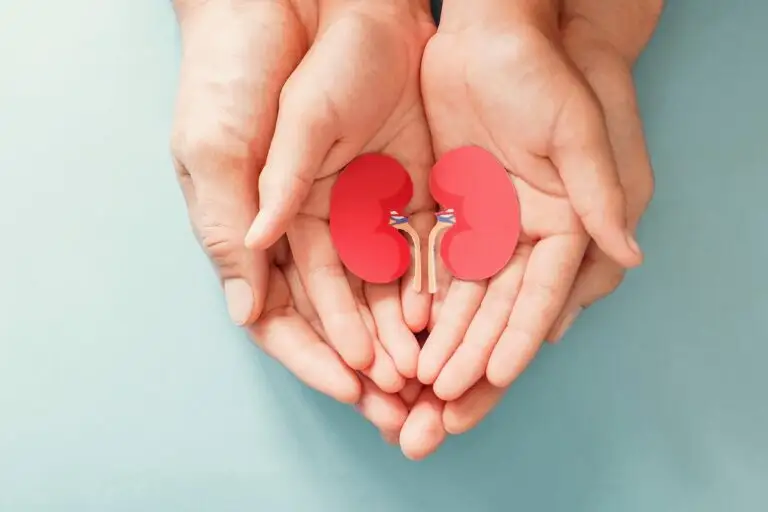
Wockhardt Hospitals, Nagpur are blessed to observe such cases of undying and unconditional love among immediate and extended family members on a regular basis. Nagpur: An elder family member vows to protect the younger one throughout life but an uncle like Mr. Sunil saves his life. Sunil Sagdeo a 56-year-old gentleman showed that love is as unconditional as it could be when he donated one of his kidneys to his nephew in absence of any compatible donor in the immediate family. It is to be mentioned that this was for the second time a family member was donating a kidney to Mr. Prasad. Prior to this, he received a kidney from his father in March 2008 which gave him a quality life for seven years. However, unfortunately, he had developed a permanent graft dysfunction with kidney failure after seven years when his uncle came forward to save his life. The whole family was determined to save him and his survival with a fully functional life against all odds today is an example of that. The organization has also been fortunate enough to witness one of the rarest and esteem acts of humanity when an inter-religion swap kidney transplant was performed five years back with both the donors leading a completely normal life. The transplant happened when a Hindu and a Muslim family were unable to find compatible donors and discovered that respective family members are compatible for paired donation. This is when an example of human love was set up beyond all the odds and they came forward to save each other above the religious barrier and set an example. “I feel a huge content in my heart by donating my kidney and saving a life”, said one of the donors. On this Valentine’s Day, we salute this bond and urge people to come forward for organ donation. Many inspiring tales of love touch our hearts- Mother-in-law donating to daughter-in-law, siblings to siblings and transplant between- cousins, parents to children, children parents, and even grandparents to grandkids are a regular sight for Wockhardt Hospitals’ transplant legacies. “My brother is my shadow, if I would not have been able to save him by giving my kidney, I would never be happy. My family is complete with him and besides, donating one kidney of mine has not raised any health issue for me and I am leading a normal healthy life. I have even got the joy of becoming a mother after the donation”, said one of the donors who gave her kidney to his brother. “We salute the spirit of these people to go beyond the normal to save their family members. This Valentine’s Day we urge people to contribute to this noble cause and register for organ donation. This will not only help their family members but also save many lives”, said Dr. Suryashree Pandey, Sr. Consultant- Nephrology, Wockhardt Hospitals in Nagpur for Kidney transplants. “There are still a huge number of people who lose their lives in absence of an organ donor. Organ donation can help save these valuable lives when there is no other hope for them”, she added. “When I got to know that my son is suffering from Chronic Kidney disease and would need a transplant, we were shocked and did not know how to react. However, we realized with time and counseling that I was a match to donate my kidney to him”, said another donor. “I feel bad for people who do not find any match in their families and have to wait in transplant lists for years to get a perfect match. Many of them die too. I really hope this awareness spreads and people register themselves for organ donation also”, he added. This year on Valentine’s Day, Wockhardt Hospitals, Nagpur request you to change the definition of love. We urge people to love other human beings also and donate their organs. To date Wockhardt Hospitals, Nagpur has performed around 45 cadaver transplants and given a new lease of life to those who were not having compatible donors. Centre Head of the hospital, Mr. Abhinandan Dastenavar said “We salute these heroes and their families for saving lives and coming forward for this act in their own grief to help someone else. To book an appointment call: 0712-6624100 Source: https://www.nagpurtoday.in/this-valentines-lets-change-the-definition-of-love/02111955






